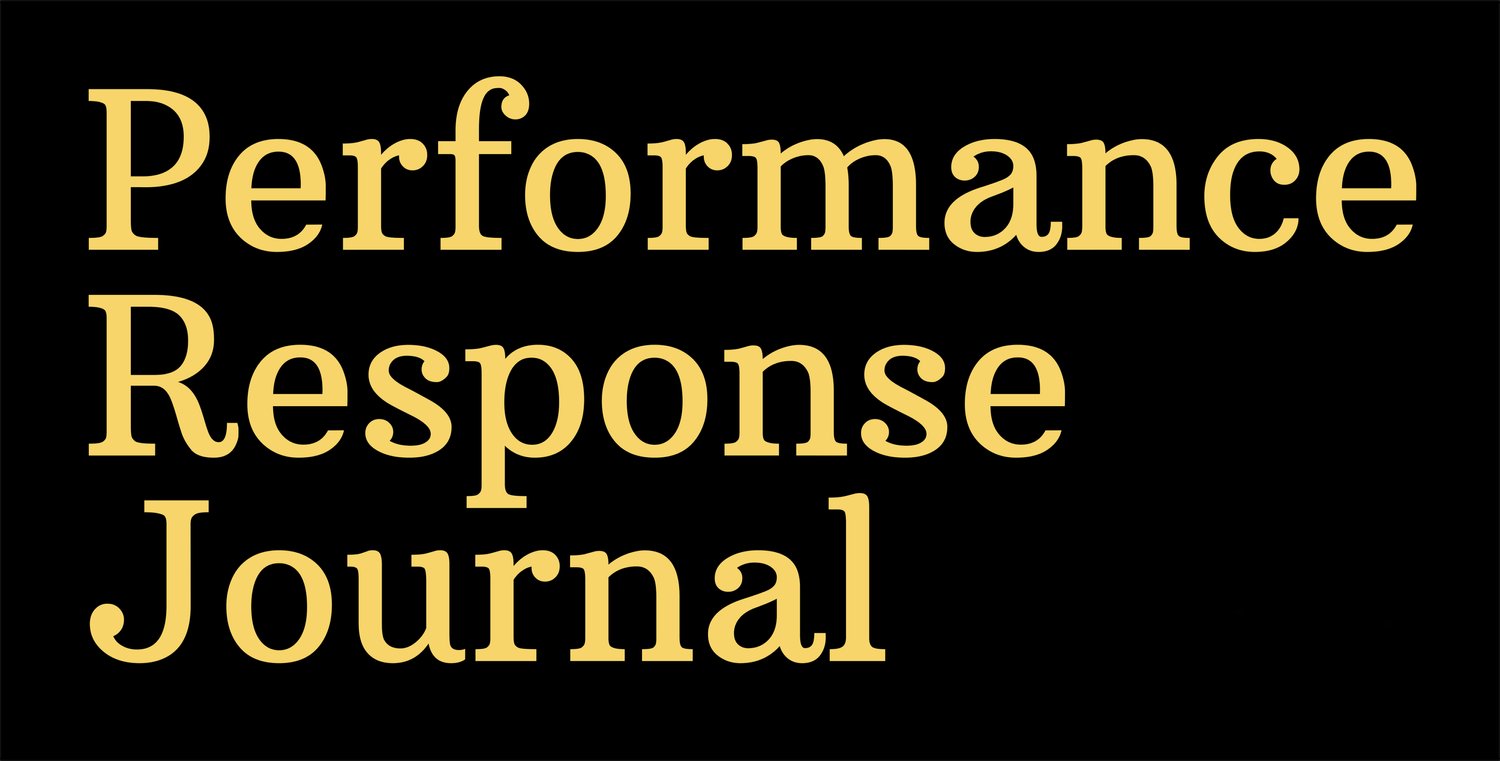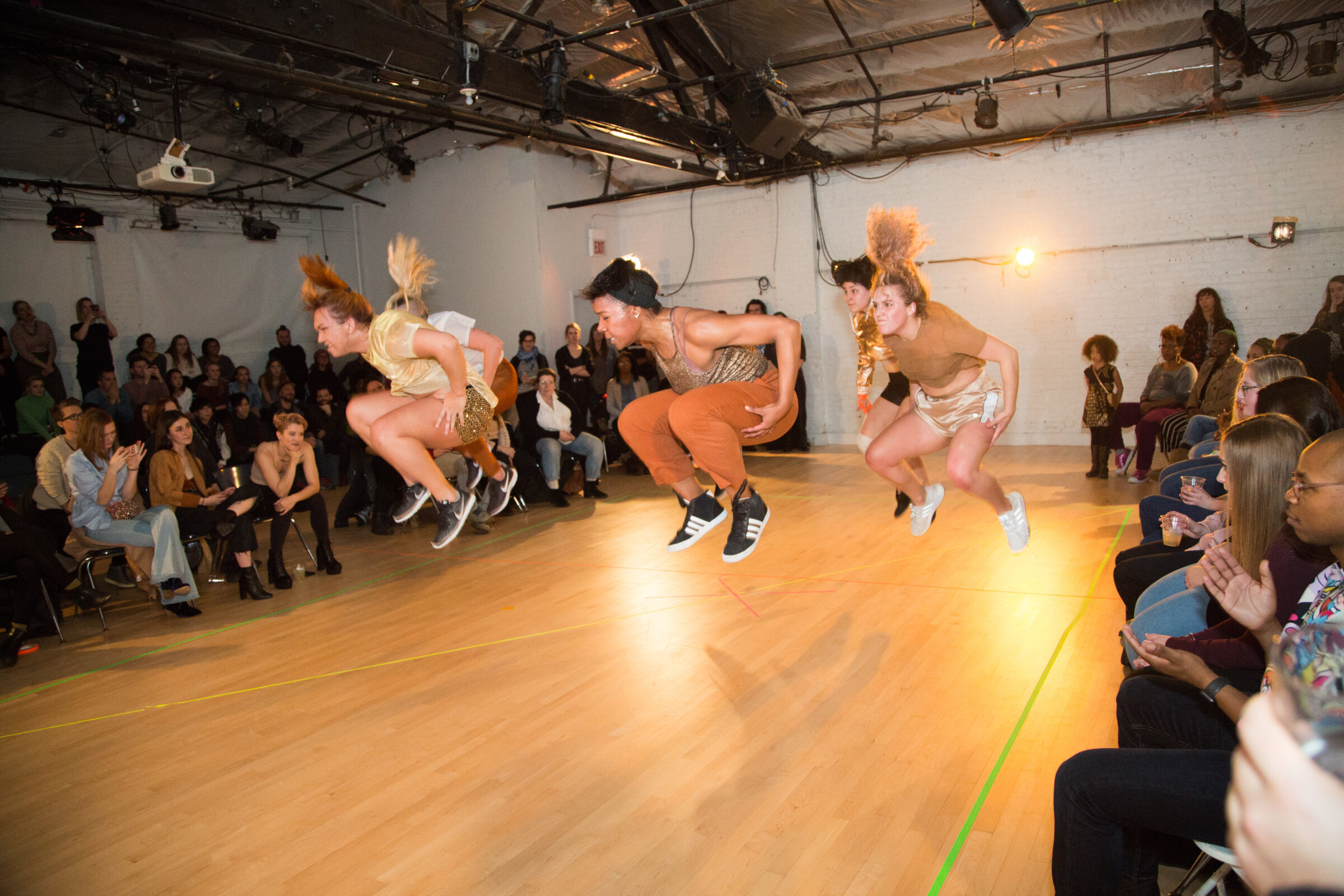Call off the Search Party: These Femmes are Found: A response by Aurora Tabar
Search Party by Erin Kilmurray
December 8th and 9th, 2018 at Links Hall (*)
Collaborating Performers: Alyssa Gregory, Camila Rivera Pooley, Dee Alba, Kaitlin Webster, Maria Blanco, and Tia Monet Greer
Costume Design: Samantha Allen
Production Design: Bran Moorhead
Tech: Giau Truong
Music: Hardrive, Jamie xx, Lizzo, Major Lazor, TNGHT, Zebra Katz
image credit: Eric Strom
********************
Links Hall has never been as bumping as the evening of Erin Kilmurray’s Search Party, the culmination of her Co-Missions residency in December 2018. As I write the word “bumping,” I feel old and unhip. That was a theme for me throughout the evening. Everyone in the audience but me seemed to recognize the first few notes of each pop song that came on, eliciting a chorus of cheers, fist pumps, and gyrating hips. Audience members freely jumped out of their seats throughout the evening, dancing along to the music or calling out performers, “Yeah, Tia!”. My typical role at Links Hall is that of a quiet audience member, thoughtfully dissecting the cerebral performance art unfolding before me. Search Party was a completely different experience, more akin to a dance club or sporting event. Folks that know Kilmurray’s previous work with The Fly Honey Show will recognize the sex-positive atmosphere and sharp, seductive choreography. Search Party builds on those themes and elevates them to another level. The result is a series of fierce portraits: the femmes of the future—powerful, strong, and ready to take over the world.
The piece begins in what feels like an arena, a grid of neon green tape in the center of the space, audience members all around. The crew struts into the space one after another: Alyssa Gregory, Tia Monet Greer, Kaitlin Webster, Dee Alaba, Camila Rivero Pooley, and Maria Blanco, each bedecked in gold athletic wear. The audience hoots and hollers, cheering them on. When the beats drop, the performers take off, storming in with high kicks, whipping ponytails and occasional dips to the floor à la voguing. A series of duet battles unfold, each performer attempting to outdo their rival by performing ever more impressive moves—front splits, the duck walk, virtuosic twerking. A handstand contest breaks out, dancers and audience members alike counting to determine the winner. Tape markings accumulate as the piece progresses—a pink X on the floor, one long orange piece bisecting the space, and eventually a thin green line running parallel to the south wall—which seem to dictate what types of movements can happen where. The performers maneuver with precision and pizzazz. They are not acting. They live for this.
image by Matthew Gregory Hollis
The music suddenly cuts out, the lighting changes, and the cast takes a clear break. They drink water, and lounge in the center of the arena. They are completely human in their visible exhaustion, revealing what might typically be hidden backstage. Several solos follow. The music slows, and we exhale as intensity dissolves into contemplation. One mover, Camila Rivero Pooley pops and locks slowly, limbs extended, like a robot moving through viscous liquid. But just as abruptly, things accelerate once more. The ensemble enters to complete a set of athletic drills. They collaborate, huddling, climbing on one another, attempting to reach a spot marked by an X high up the south wall. Moments of incredibly satisfying ensemble unison ensue, complete with lunges, stomps, and chest slaps. They go and go, and go some more, skin glistening with sweat. Their panting and grunts grow in concert with their exhaustion. The buzzer rings and all the dancers pause, face the audience, and victoriously lift their shirts. The audience erupts, and the dancers continue to pose for a solid three minutes. When the next music cue starts, one performer breaks to turn it off, and returns as the group continues posing, and we continue cheering.
These bodies are strong, capable, queer, and kinky. As its title suggests, Search Party is both an ecstatic celebration and a thoughtful inquiry. Who holds power? And who is seen? These are performers who demand visibility. They do not need a search party. They are in your face, proud, and their ferocity is unassailable. Their power and rage are resonant, and I experience them sympathetically. Search Party is performance that makes me feel alive. If these are the femmes of the future, then I am on board.
********************
Aurora Tabar is a Chicago-based performing artist and occupational therapist. Her professional and creative practices examine the process of healing and the potential for transformation. Aurora’s current project, The Existential Coat Check, is a roving pop up booth that invites participants to shed their ‘psychic’ baggage through writing and drawing activities. She has presented live performance locally at Links Hall, High Concept Laboratories, The Hyde Park Art Center, Chicago Cultural Center, and Outer Space. Alongside Carole McCurdy, she is co-curatoring Power Ouch!, is a festival of body-based performance taking place at Links Hall in February 2019. Aurora works in special education, helping young people with disabilities learn and build functional skills. She lives on the west side of Chicago with her partner and their two cats.
(*) PRJ is partnering with Links Hall to celebrate their 40th anniversary by providing a platform for artist-to-artist responses to the work that is presented as part of the Pay-the-40th-Forward season. Thank you, Links Hall, for all that you do for the dance and performance communities in Chicago. Congratulations on 40 years!



